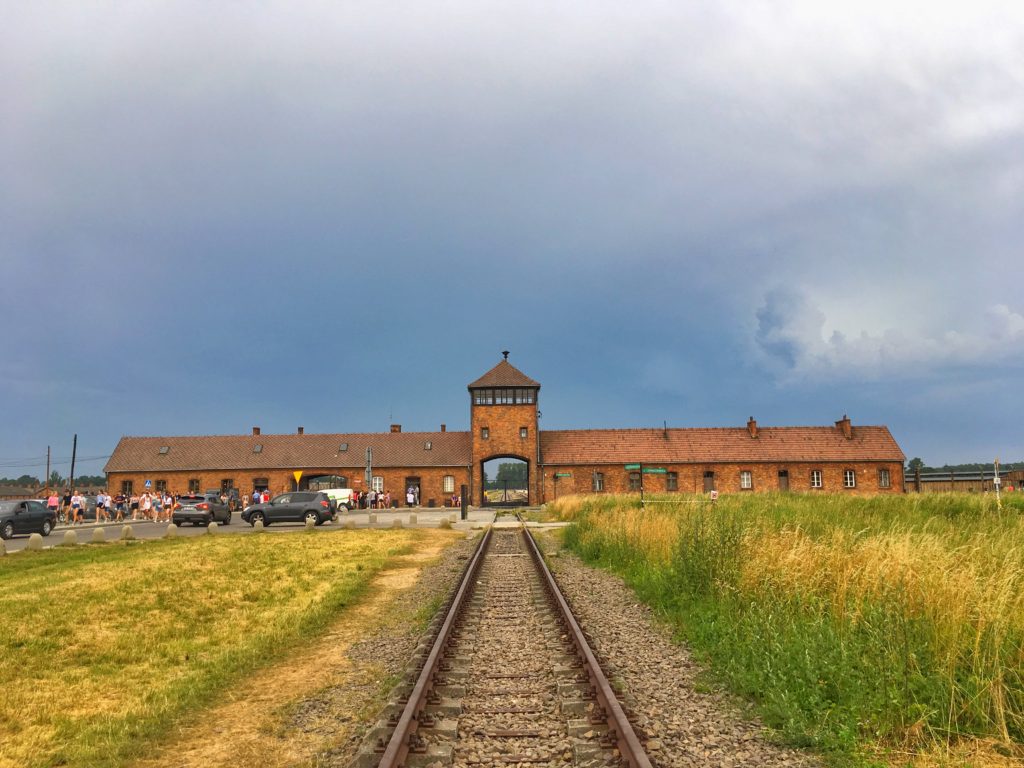During my stay in Kraków, Poland, I took a day-trip to Auschwitz-Birkenau, the Nazi concentration camp that murdered over 1.1 million people, the highest death toll out of all Nazi concentration camps by a significant margin.
Auschwitz is by far the most famous extermination camp set up by Nazi Germany to carry out the “Final Solution”, the annihilation of the Jewish people. It so happened that I had just taken a class on the Holocaust in my last semester of college to complete my humanities requirement. Seeing Auschwitz in person was an experience that made what I learned from class a lot more real and palpable. It is one thing to read about more than a million people being killed, but visiting the actual place where all this killing happened had a more intense impression on me as well as on the millions of visitors who come to Auschwitz every year. Walking through stacks of human hair, suitcases, shoes, eyeglasses, and other personal belongings of the murdered victims is a far more poignant experience than simply reading the facts of what happened at Auschwitz. The photos and mugshots of prisoners make visitors recognize the humanity of each person murdered here, and understand the enormity of what the Nazis had done. By the end of the visit I saw other visitors in tears, horrified at what had taken place in the buildings we just walked through.
Located about 1.5 hours from Kraków by car, Auschwitz-Birkenau today is a museum and a memorial. Auschwitz-Birkenau is actually divided into 3 different camps: Auschwitz I, located in the Polish town of Oświęcim; Auschwitz II-Birkenau, located in the Polish village of Brzezinka; and Auschwitz III-Monowitz, located in the Polish village of Monowice and not open to the public. All three of the camps are within a few kilometers from each other, and were organized together under the command of Rudolf Höss.
Because my hotel in Kraków organized tours to Auschwitz, I had the convenience of traveling to Auschwitz by car with a tour guide. We started the visit at Auschwitz I, where the famous “Arbeit Macht Frei” (“Work Sets You Free”) sign still stands over the main entrance.
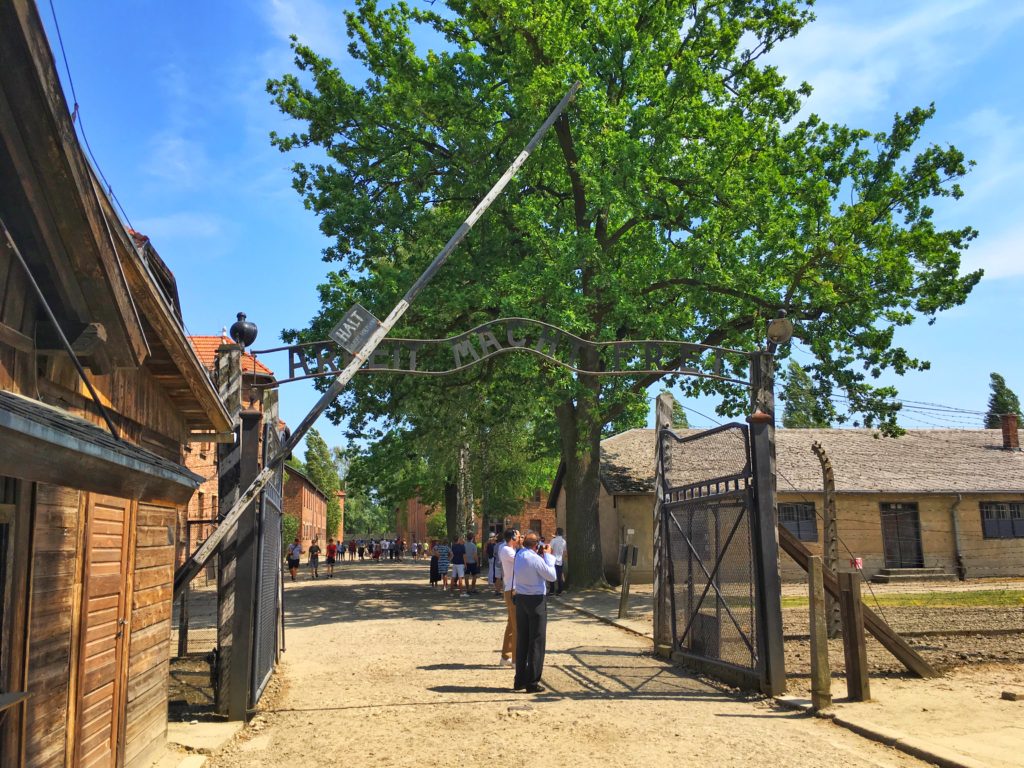
Above: The main entrance of Auschwitz I, with the slogan “Arbeit Macht Frei” (“Work Sets You Free”) overhead
Many of the buildings in Auschwitz I are now full exhibits on the Holocaust. Seeing stacks of the victims’ human hair and personal belongings made an impression on me. We weren’t allowed to take photos of the human hair out of respect, and I followed this rule closely. The Nazis did not let things go to waste, selling the victims’ hair to industrial companies as raw material for textiles and other goods. Good shoes, clothes, and suitcases were often sold to businesses, and the Nazis tried to make as much money as they could from the victims’ possessions.
I learned from my tour guide that the wired fences used to be electrified when Auschwitz was in operation. Some prisoners attempted to commit suicide by running into the electric fences. There are often signs ordering prisoners to not get close to the fences, and guard towers for guards to shoot anyone attempting to escape.
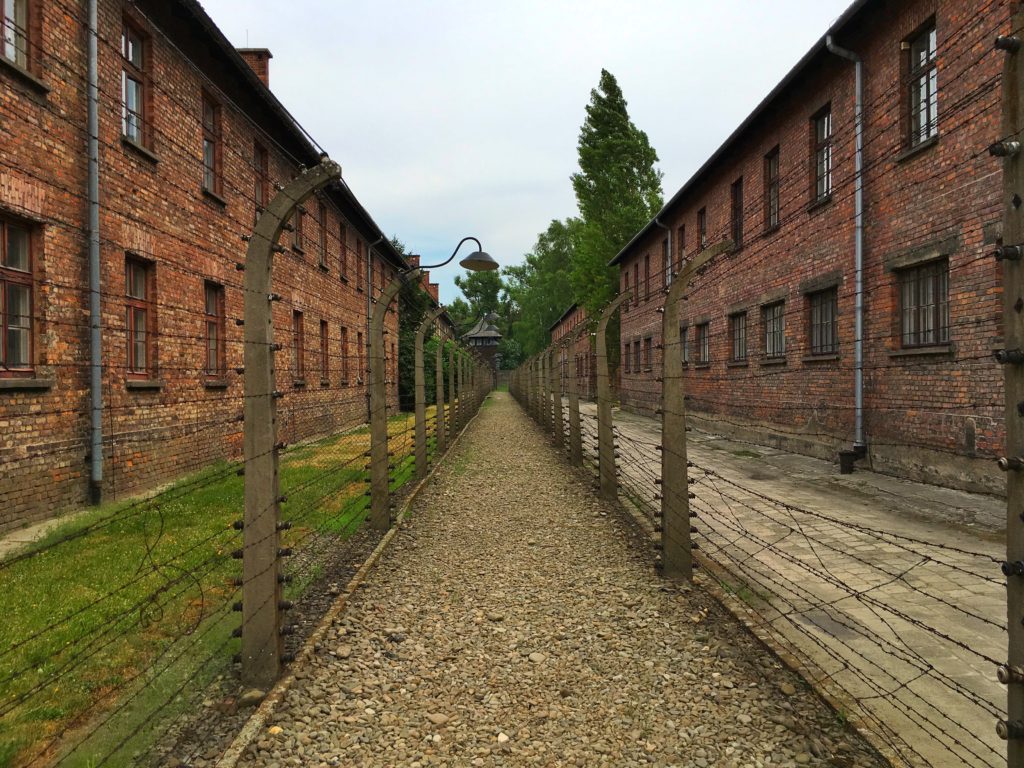
Above: In between fences at Auschwitz I
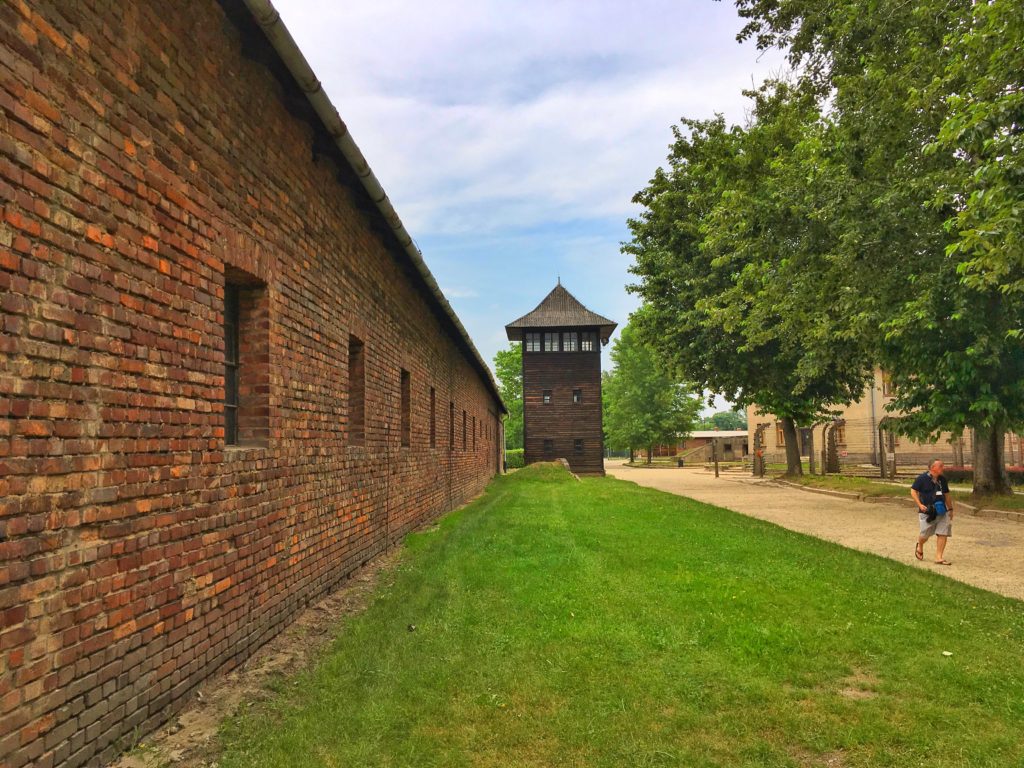
Above: Guard tower at Auschwitz I
After going through a few exhibits in the buildings of Auschwitz I, I went inside one of the gas chambers and its attached crematorium. Knowing that I was in the same room where countless batches of people were brought in and murdered was an experience I will not forget. The room next to the gas chamber was the crematorium where the bodies were burned.
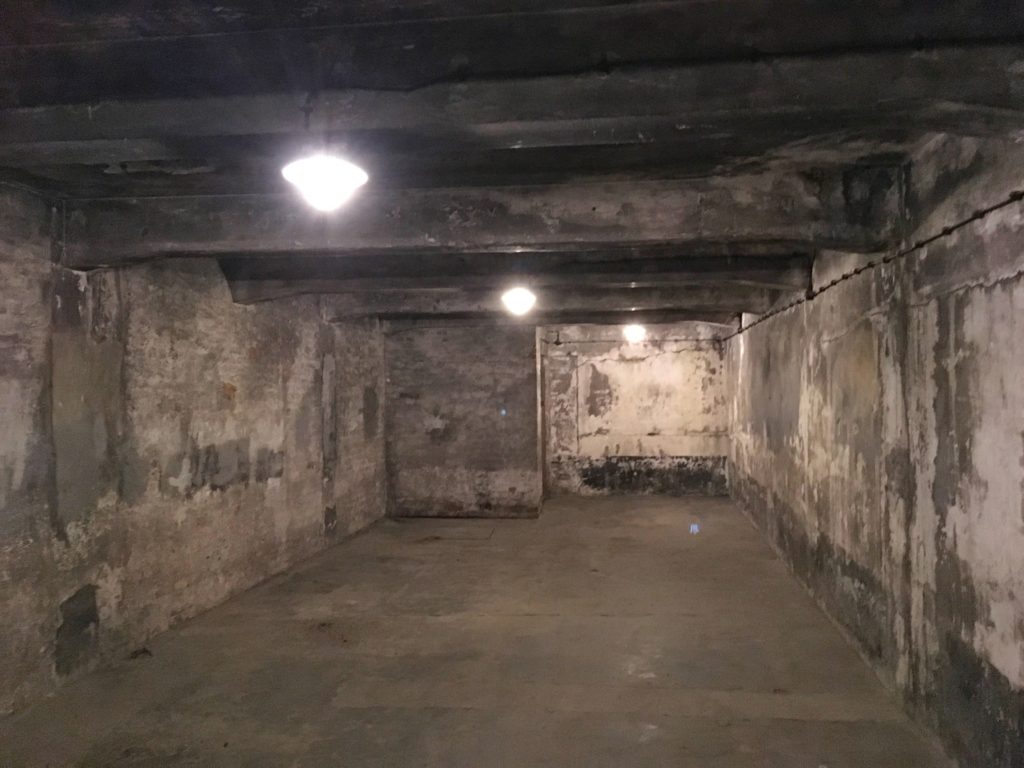
Above: Inside a gas chamber
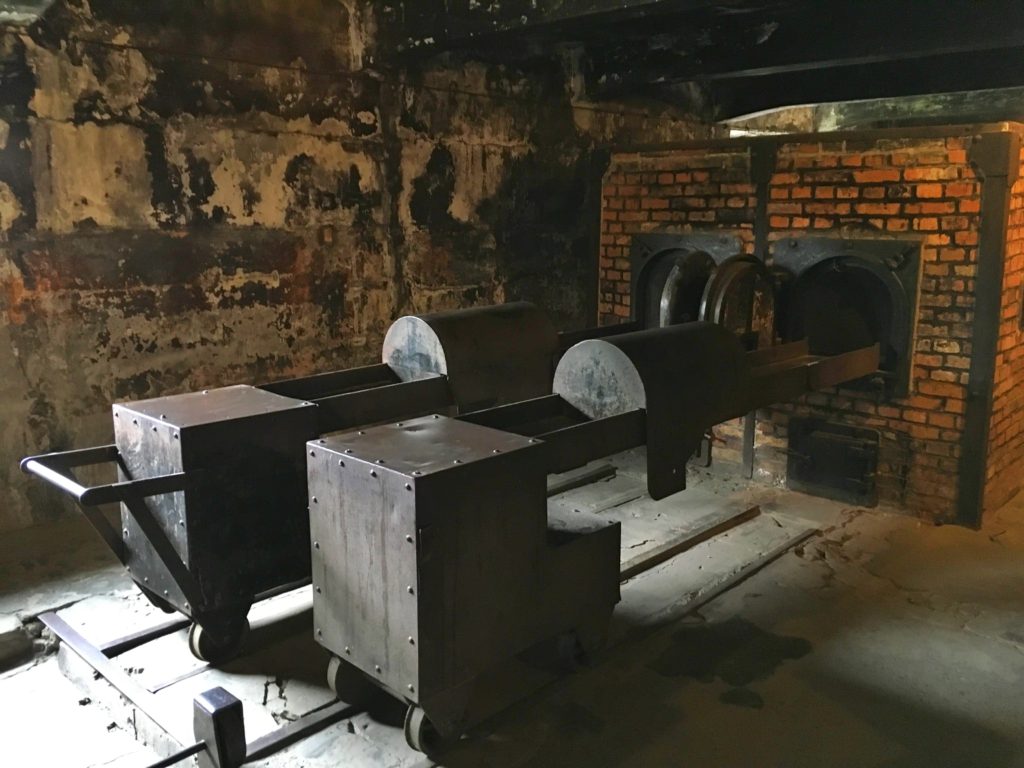
Above: The crematorium
Gassing was not the only method of execution that the Nazis used on the prisoners. Many simply starved to death, while others were shot. One of the buildings housed special penal cells where disobedient prisoners were punished and/or executed by shooting. Many cells were tiny with no room to sit or lie down. These cells were called standing cells. There were also suffocation cells where prisoners were put simply to suffocate to death. Photos of the penal cells were not allowed out of respect of the many people who died inside those cells. Outside the building with the penal cells stands the execution courtyard, where prisoners would be shot.
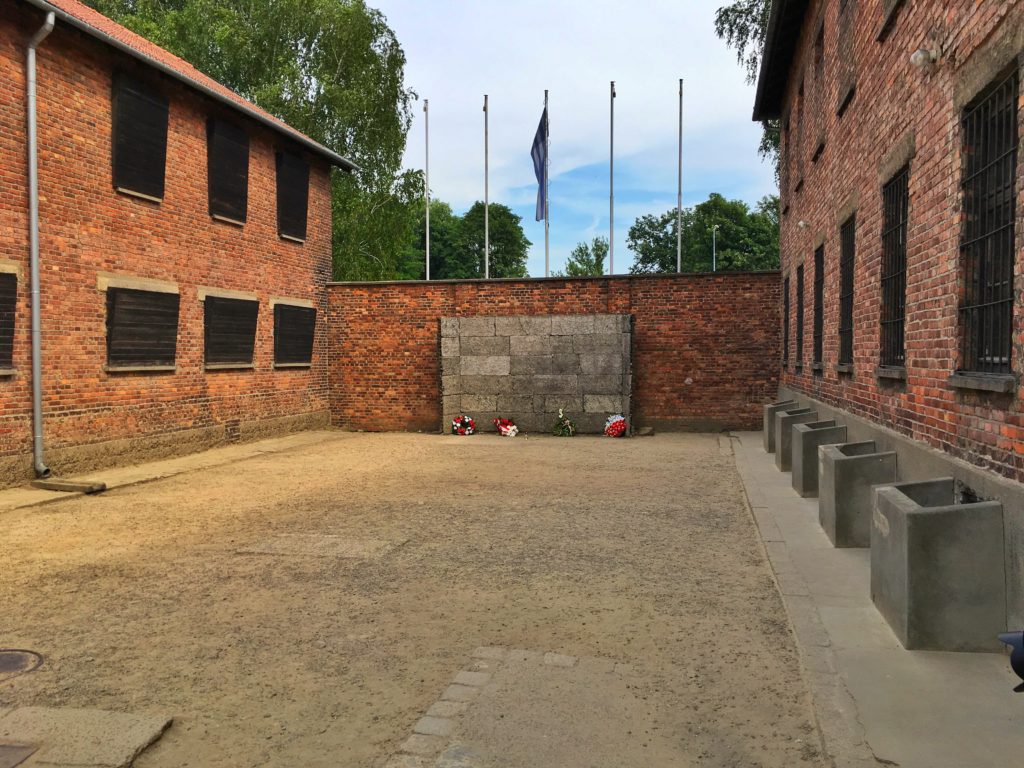
Above: The execution courtyard
After World War II, the commandant of Auschwitz-Birkenau, Rudolf Höss was hanged at Auschwitz, near the villa where he used to live while he was commandant. The wooden gallows where he was hanged still stands today, at the exact same spot. His villa still stands and is now a private residence not open to the public.
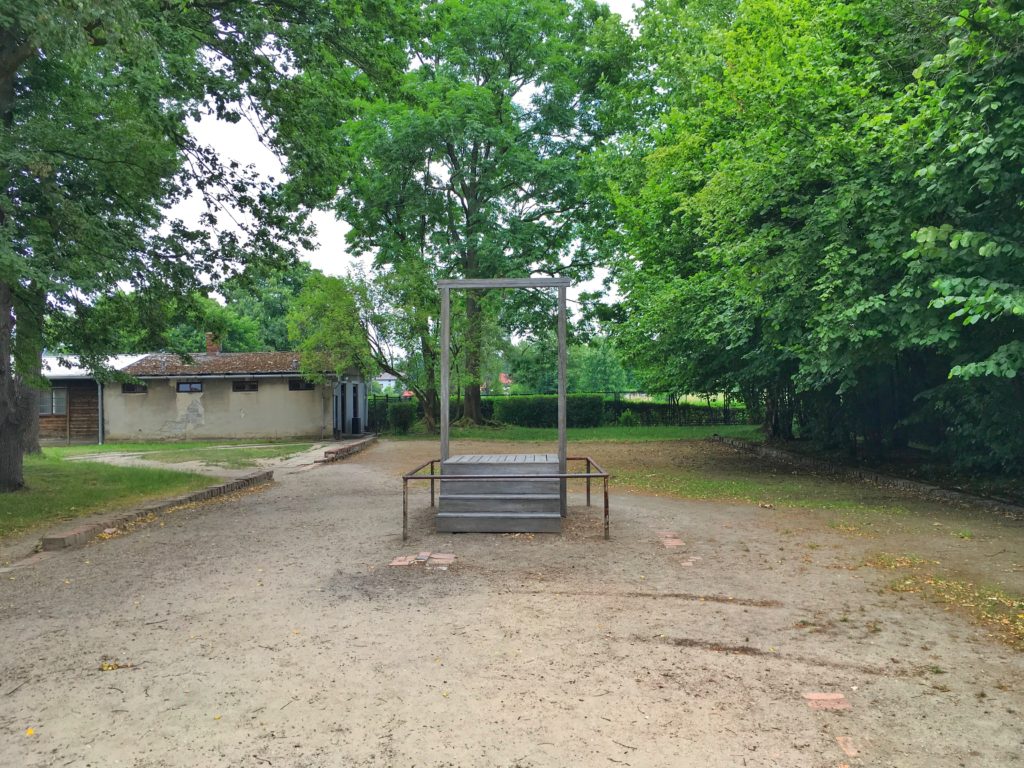
Above: The wooden gallows where Rudolf Höss was hanged
After touring Auschwitz I, I went to Auschwitz II-Birkenau, which was responsible for most of the extermination work of the three-camp complex. While Auschwitz I housed many of the administrative offices, and Auschwitz III-Monowitz was mainly used for renting labor to factories, Auschwitz II-Birkenau was the main death camp where most prisoners were killed.
Situated a few kilometers away from Auschwitz I, Auschwitz II-Birkenau is where the famous “Gate of Death” stands, a gate where millions of people went through before they were murdered. The majority of the buildings at Auschwitz II-Birkenau were destroyed during and after the war, with few buildings still standing. The featured image at the top of this article is that of the “Gate of Death”.
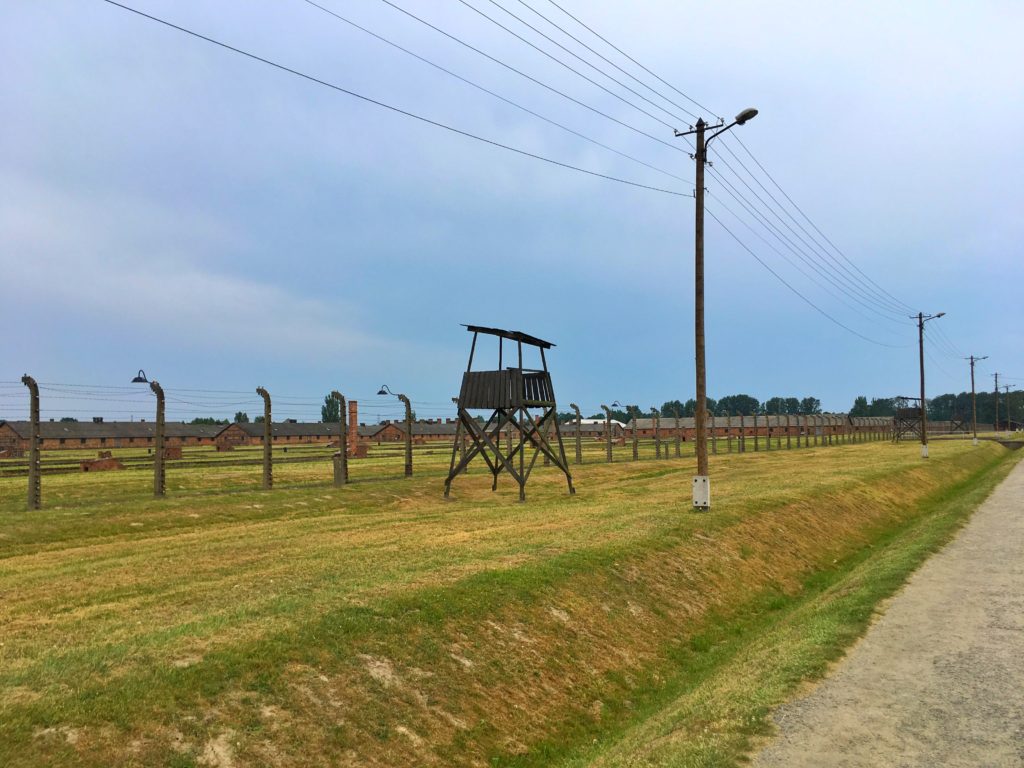
Above: Guard tower at Auschwitz II-Birkenau
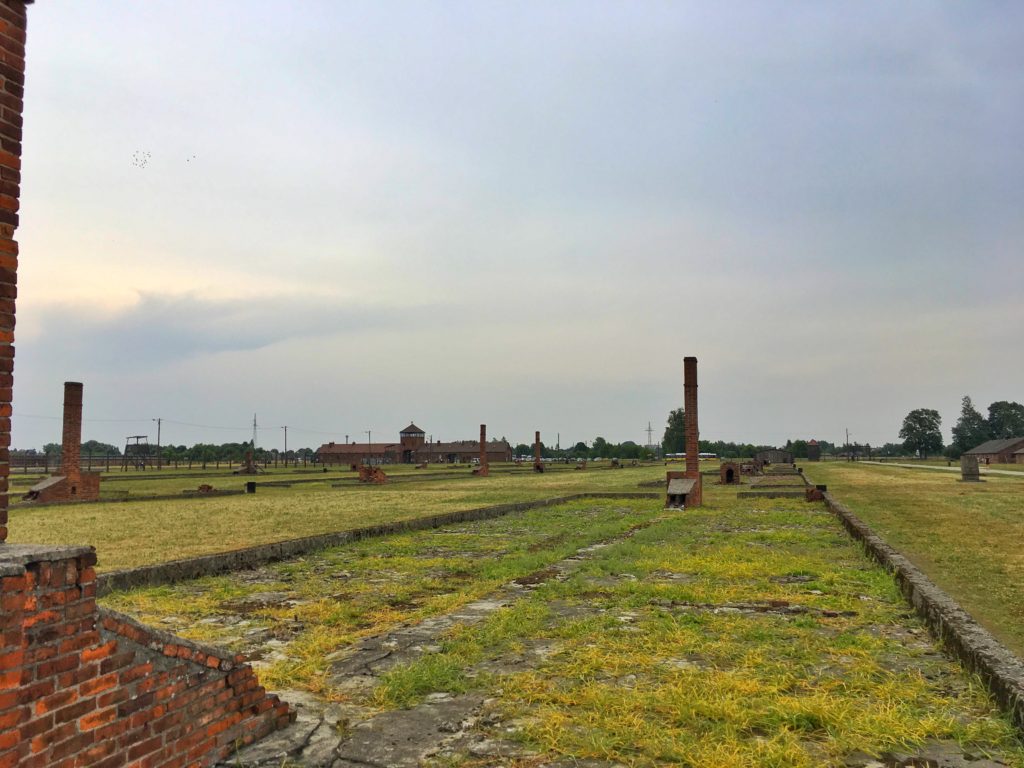
Above: Destroyed buildings at Auschwitz II-Birkenau
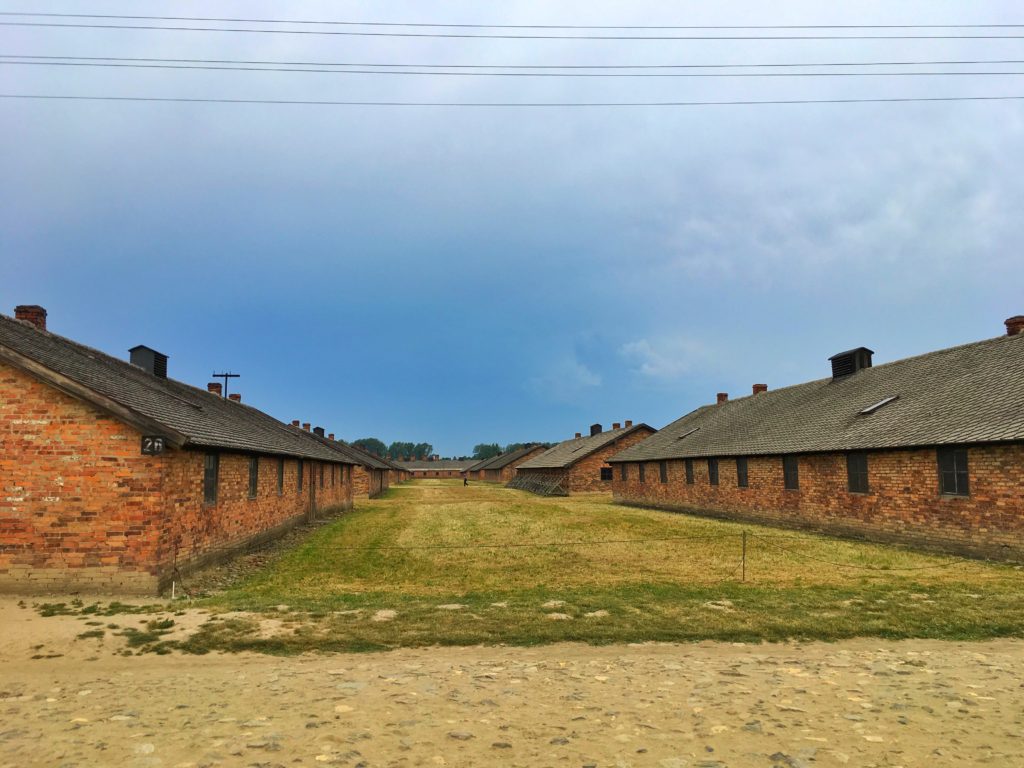
Above: Many of the stone barracks at Auschwitz II-Birkenau are still standing, while almost all the wooden ones were destroyed
One of the few buildings left standing at Auschwitz II-Birkenau is a building that housed prisoners that awaited execution by shooting. Prisoners there were housed in extremely bad conditions, with up to 8 people in only one bed. They were only allowed to use the bathrooms at certain times, and would be shot on the spot for defecating on the grass outside. There were two bathrooms for the hundreds of prisoners housed there.
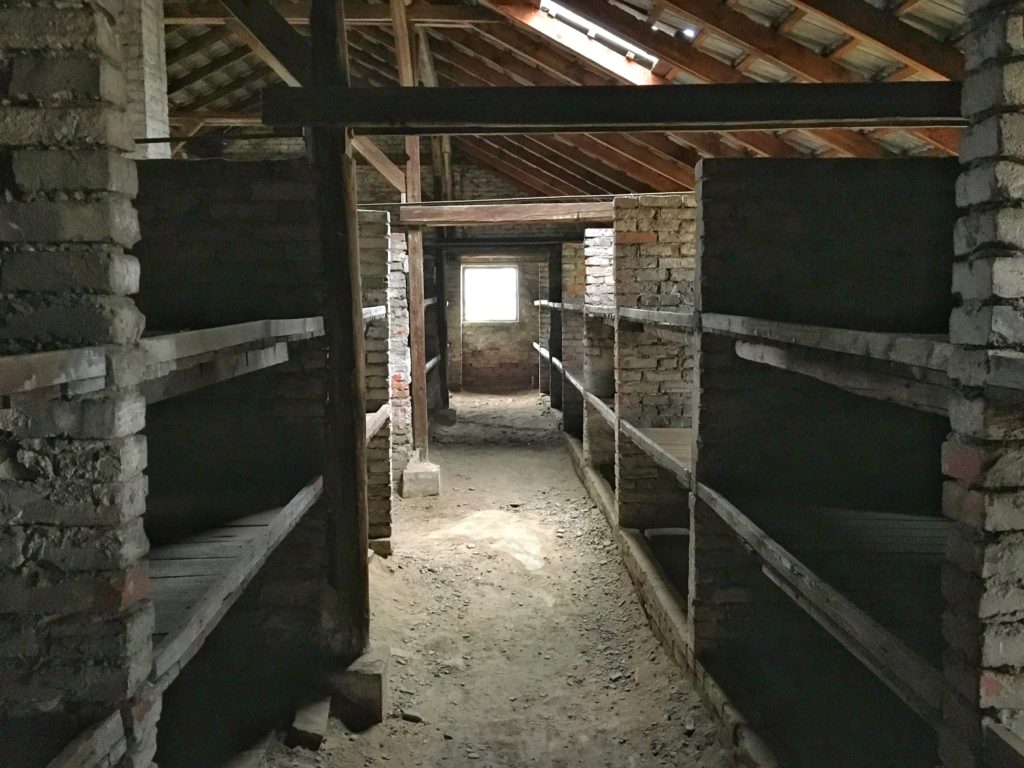
Above: Inside one of the buildings housing prisoners awaiting death by shooting
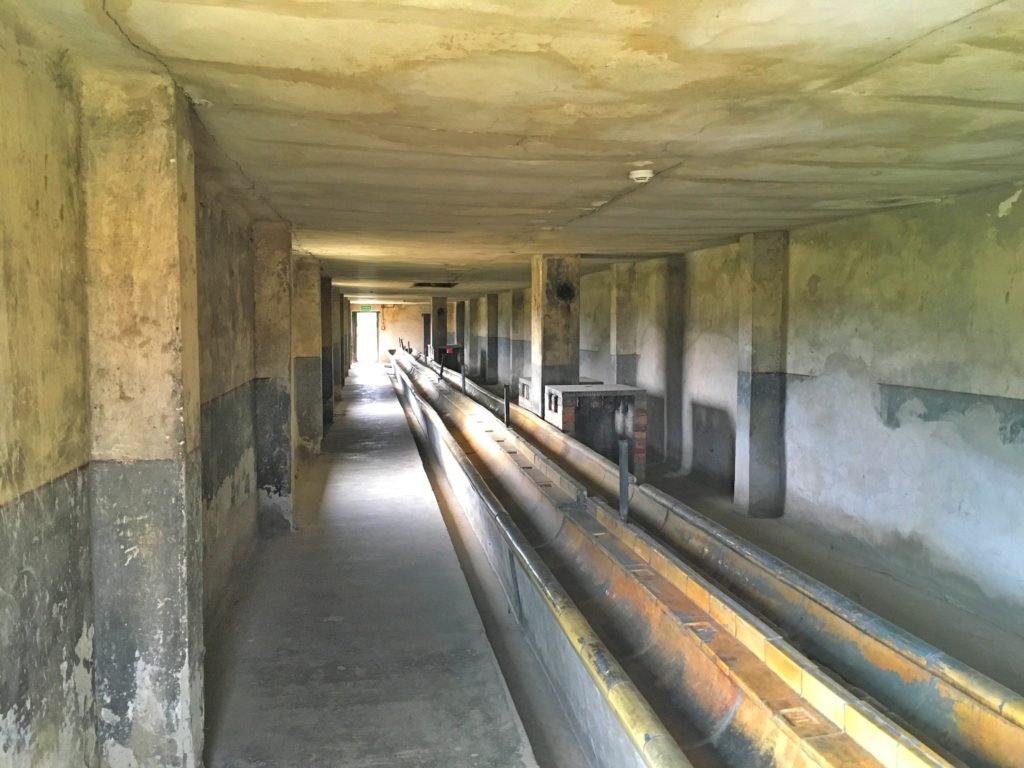
Above: The bathroom for prisoners
I finished my tour of Auschwitz-Birkenau at the “Gate of Death”. I was interested in seeing Auschwitz III-Monowitz, but my tour guide informed me that Auschwitz III is closed to the public and its factories are now in operation for private businesses. When I left Auschwitz, I saw other visitors with tears in their eyes, horrified at the brutality humans are capable of inflicting upon one another.
